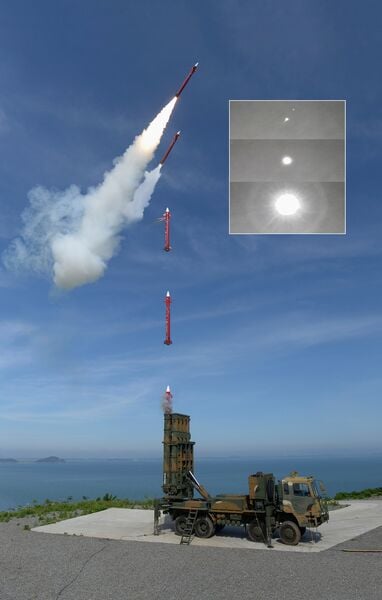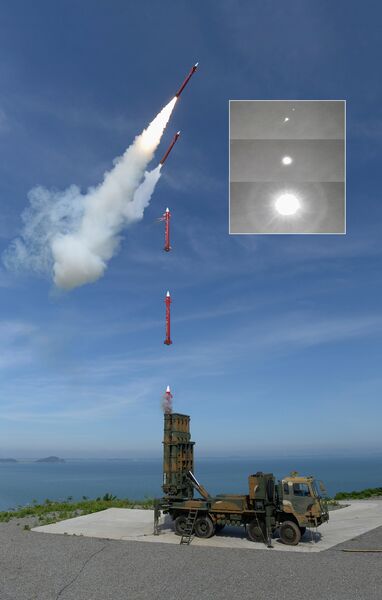
A Cheongung II launcher can carry up to eight missiles. (DAPA)
South Korea’s Defense Acquisition Program Administration (DAPA) has initiated a project to enhance the performance of its baseline Cheongung medium-range surface-to-air missile (M-SAM).
DAPA said on 30 July that the project will enhance the Cheongung I missile, which was deployed from 2016, to match the performance of the evolved Cheongung II system by 2027. The Cheongung system was developed jointly by DAPA’s Agency for Defense Development (ADD) and LIG Nex1.
The project to upgrade Cheongung I is valued at KRW644 billion (USD462 million), which DAPA said was less than the cost of introducing a new, similar capability.
DAPA said the upgrade will “significantly strengthen our military’s ballistic missile response capabilities”. It added that the Cheongung I upgrade consists of improvements to the missile system’s control centre and multifunction radar, which are “expected to enhance low-altitude detection and simultaneous engagement capabilities”.
DAPA added that the Cheongung II capability is regarded as a core element of the Korean Air and Missile Defense (KAMD), which is being developed to counter North Korean ballistic missile threats. Initial development of Cheongung II began in 2012, and LIG Nex1 commenced mass production of the system in 2017. The Republic of Korea Army (RoKA) received a first batch of the missiles in 2020, and the system was deployed from 2023.
According to Janes Land Warfare Platforms: Artillery & Air Defence, Cheongung II can intercept targets at a maximum range of 40 km and at altitudes between 20 and 40 km. The missile features a hit-to-kill defeat mechanism and is equipped with an active radar seeker. It is a single-stage solid‐fuel missile that can carry a high-explosive fragmentation (HE-FRAG) warhead triggered by a proximity fuse.
Gain unlimited access to Janes news and more…

